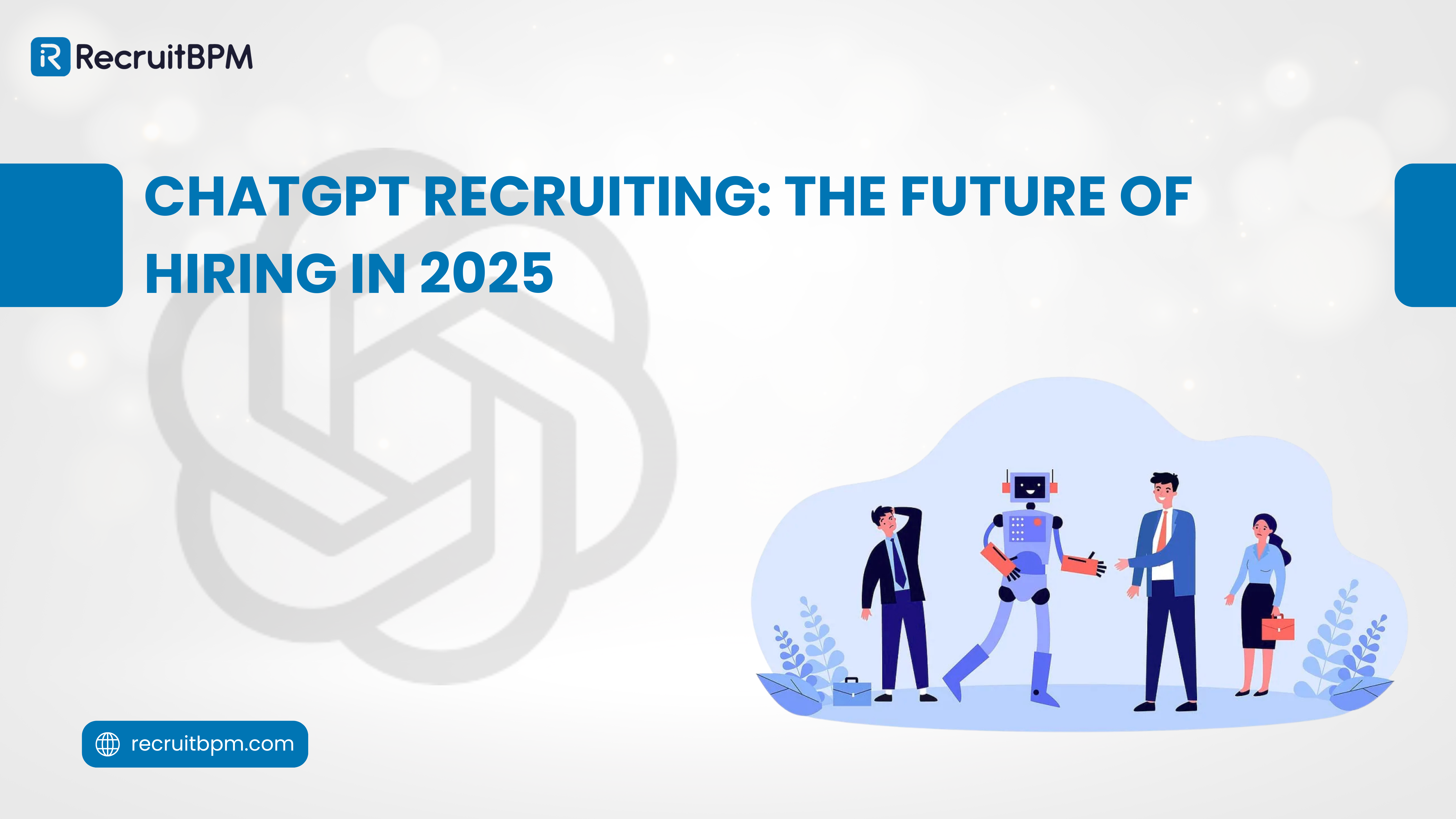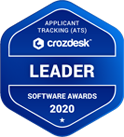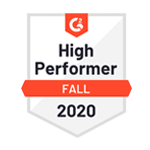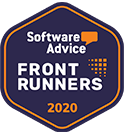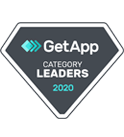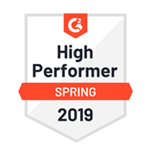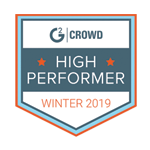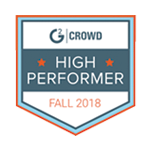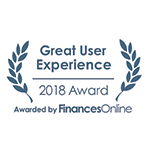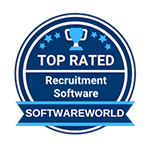The recruitment landscape has undergone a dramatic transformation. Gone are the days of manually sifting through hundreds of resumes and conducting endless interview rounds.
AI-powered solutions are revolutionizing talent acquisition, and ChatGPT recruiting stands at the forefront of this change. This comprehensive guide explores how generative AI is reshaping hiring in 2025.
What is ChatGPT Recruiting?
ChatGPT recruiting refers to using artificial intelligence powered by natural language processing to streamline and automate hiring processes. This technology enables recruiters to conduct conversations with candidates, analyze resumes, generate content, and make data-driven decisions.
According to recent industry data, 53% of employers now use some form of AI in hiring. This figure nearly doubled from just 26% in 2023, demonstrating rapid adoption across the talent acquisition landscape.
How ChatGPT Works in Recruitment?
The technology combines machine learning algorithms with conversational AI capabilities. It processes candidate information, understands context, and generates human-like responses. The system analyzes resumes, cover letters, and other documents with remarkable accuracy.
Natural language processing enables ChatGPT to understand nuanced language patterns. It evaluates qualifications, assesses behavioral traits, and identifies potential concerns in applications. This creates efficiency that traditional methods simply cannot match.
Key Technologies Behind ChatGPT
Large language models form the foundation of ChatGPT recruiting solutions. These models are trained on vast datasets, enabling them to understand and generate text across multiple contexts.
Machine learning continuously improves the system’s performance. As it processes more data, it becomes better at identifying patterns and making accurate predictions about candidate success.
How ChatGPT is Transforming the Hiring Process in 2025?
The global artificial intelligence in HR market reached $6.99 billion in 2025, reflecting a compound annual growth rate of 15.6%. This growth signals widespread recognition of AI’s value in recruitment.
AI-Powered Resume Screening and Candidate Sourcing
Intelligent screening systems now identify qualified candidates within minutes. They analyze keywords, algorithms, and recruitment data to grade applications automatically. This addresses a critical pain point for recruiters who receive hundreds or thousands of applications.
Talent intelligence capabilities enable proactive sourcing strategies. By analyzing large amounts of internal and external data, AI identifies passive candidates and builds robust talent pipelines based on desired skills.
Automated Interview Scheduling and Coordination
Research shows that 80% of organizations using AI scheduling tools saved 36% of their time compared to manual methods. This eliminates the frustrating back-and-forth that delays hiring.
Automated coordination keeps candidates informed at every stage. Real-time updates maintain engagement without requiring constant manual follow-up from recruiters.
Real-Time Candidate Engagement and Communication
Conversational AI creates seamless, personalized interactions with job seekers. Chatbots answer questions about roles, provide application assistance, and deliver timely responses that improve candidate experience.
Automated messaging tools engage candidates throughout their journey. Companies utilizing AI-assisted messaging are 9% more likely to make quality hires compared to those using it minimally.
Benefits of Using ChatGPT for Recruiting
The advantages of AI-driven talent acquisition extend far beyond simple automation. Organizations implementing these solutions report transformative results across multiple dimensions.
Time and Cost Savings
Recruiting traditionally consumes enormous resources. ChatGPT automates repetitive tasks like resume screening, candidate communication, and interview scheduling. This allows recruiters to focus on high-value activities like relationship building and strategic planning.
Cost reduction comes from decreased reliance on external agencies and reduced job board expenses. The technology handles tasks that would otherwise require additional headcount or outsourced services.
Enhanced Candidate Experience
Modern job seekers expect seamless, personalized interactions. AI ensures candidates receive timely responses and relevant information throughout their journey. This creates positive impressions that strengthen employer branding.
Personalized communication tailored to individual candidates demonstrates respect for their time. Real-time feedback and updates prevent the “black hole” experience that frustrates applicants.
Data-Driven Hiring Decisions
Predictive analytics forecasts candidate success by evaluating historical data. This improves the quality of hire by identifying individuals most likely to thrive in specific roles.
Workforce analytics provide insights into pipeline health, diversity metrics, and process bottlenecks. Recruiters gain visibility into time-to-hire, cost-per-hire, and sourcing effectiveness, enabling continuous improvement.
Improved Quality of Hire
Research indicates that AI can improve candidate attraction and retention by 96%. Standardized screening processes minimize human biases that can cloud judgment.
Skills-based hiring powered by AI focuses on objective qualifications rather than subjective impressions. This leads to better matches between candidates and organizational needs.
How to Use ChatGPT in Recruitment?
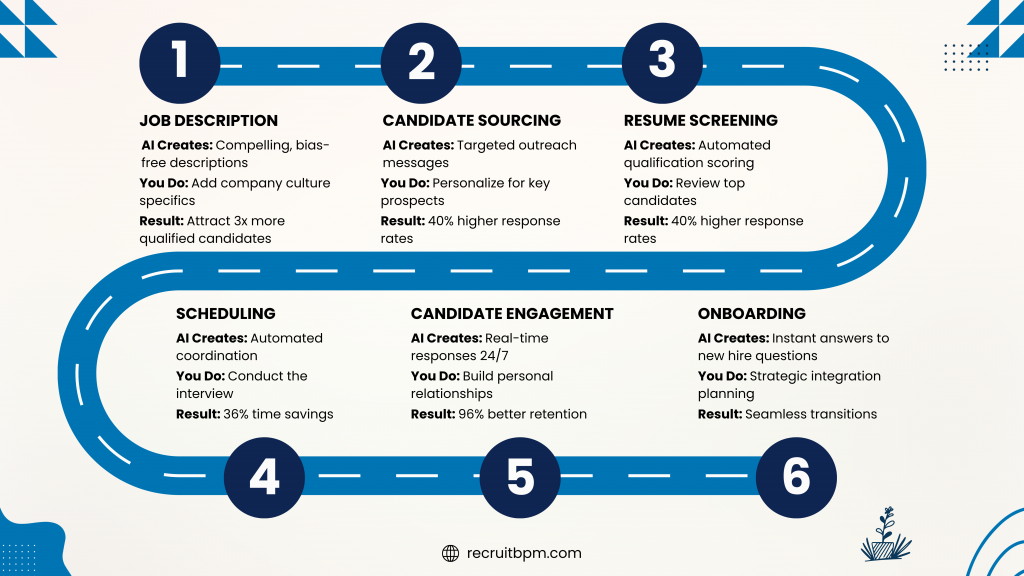
Understanding theoretical benefits matters less than knowing practical applications. Here’s how leading organizations leverage ChatGPT across the talent acquisition funnel.
Writing Job Descriptions with AI
Crafting compelling job descriptions consumes valuable time. ChatGPT analyzes industry trends and competitor postings to generate descriptions that attract qualified candidates.
The AI tailors language to specific demographics and highlights attractive aspects of roles. It removes biased language and ensures inclusive messaging that appeals to diverse talent pools.
Creating Personalized Outreach Messages
Cold outreach requires careful customization to resonate with prospects. ChatGPT drafts targeted emails that introduce recruitment services, highlight unique value propositions, and encourage engagement.
The technology adapts messaging based on the recipient industry and addresses specific pain points. This personalization dramatically improves response rates compared to generic templates.
Generating Interview Questions
Developing relevant interview questions for different roles presents challenges. ChatGPT creates comprehensive question lists tailored to specific positions and seniority levels.
It suggests behavioral questions, technical assessments, and situational scenarios. The AI ensures questions evaluate both hard skills and soft skills essential for success.
Candidate Screening and Assessment
Pre-screening conversations conducted by AI gather essential information efficiently. The technology asks about experience, skills, motivations, availability, and salary expectations.
Automated assessment tools evaluate candidate responses and provide preliminary suitability ratings. This narrows applicant pools to the most promising prospects.
Onboarding New Hires
ChatGPT extends beyond hiring into onboarding support. New employees receive instant answers about first-day logistics, paperwork, and team introductions through conversational interfaces.
The AI accesses employee handbooks and company wikis to provide accurate information. This creates smooth transitions and reduces administrative burden on HR teams.
ChatGPT Prompts for Recruiters
Effective prompt engineering separates successful AI implementation from disappointing results. The specificity and context of your prompts directly impact output quality.
Ready-to-Use Prompts for Different Hiring Stages
For Job Description Creation: “Draft a compelling job description for a Senior Data Scientist position at a biotech company. Include key responsibilities, required qualifications, and company culture elements that attract top talent.”
For Candidate Outreach: “Write a personalized outreach email to a passive candidate with 7 years of software engineering experience. Highlight our company’s innovative projects and growth opportunities while maintaining a friendly, professional tone.”
For Interview Preparation: “Generate 10 behavioral interview questions for a Sales Manager role. Focus on leadership experience, conflict resolution, and customer relationship management. Include follow-up questions for deeper insights.”
For Reference Checks: “Draft professional email requesting written reference for a Marketing Director candidate. Ask specifically about performance, collaboration skills, and areas for development. Keep tone concise and respectful.”
Best Practices for Prompt Engineering
Be specific and detailed in your instructions. Vague prompts produce generic responses that lack relevance. Provide context about your industry, company culture, and specific requirements.
Assign ChatGPT a role to improve response quality. For example: “You are an experienced tech recruiter at a SaaS company.”
Break complex tasks into smaller, manageable prompts. Rather than asking for complete onboarding materials, request individual sections separately for better results.
Iterate and refine outputs. Review AI-generated content, provide feedback, and request revisions. This collaborative approach produces superior final results.
Limitations and Challenges of ChatGPT in Recruiting
While AI offers tremendous benefits, understanding its limitations proves equally important. Responsible implementation requires acknowledging what ChatGPT cannot do and where human oversight remains essential.
Bias and Ethical Concerns
AI systems can inherit and amplify biases present in training data. A study involving 34,560 vacancy-CV combinations found that ChatGPT’s evaluations were influenced by ethnic and gender identity.
Research demonstrates that over 70% of machine learning models exhibit some bias due to skewed training datasets. Historical hiring data often reflects existing inequities, which AI can perpetuate.
The Equal Employment Opportunity Commission has identified AI hiring as “a new civil rights frontier.” In 2023, a class-action lawsuit against Workday alleged that AI screening tools discriminated based on race, age, and disability.
Mitigating bias requires diverse training datasets, continuous monitoring, and transparent algorithms. Regular audits help identify problematic patterns before they cause harm.
What ChatGPT Can’t Do?
AI excels at processing information but struggles with uniquely human capabilities. Assessing soft skills like emotional intelligence, cultural fit, and leadership potential requires human judgment.
The technology cannot evaluate non-verbal cues during interviews. Body language, tone of voice, and facial expressions provide critical insights that AI misses.
ChatGPT may produce inaccurate information, a phenomenon called “hallucination.” It cannot verify facts in real-time or access current information beyond its training data.
Human Oversight Requirements
Recruiters must review and validate AI-generated content before using it. Automated systems should augment human decision-making, not replace it entirely.
Compliance with labor laws and regulations demands human expertise. Legal interpretations and ethical considerations require a nuanced understanding that AI lacks.
Relationship building remains fundamentally human. While AI handles administrative tasks, recruiters must focus on personal connections that attract and retain top talent.
AI Recruiting Tools Powered by ChatGPT
The ecosystem of AI-powered recruitment platforms has expanded rapidly. These solutions integrate generative AI capabilities into comprehensive talent acquisition systems.
Leading Platforms and Solutions in 2025
HireEZ offers end-to-end recruitment technology with ChatGPT integration. The platform auto-populates tailored outreach emails based on job descriptions, making candidate engagement more efficient.
Manatal provides cloud-based ATS and CRM with embedded AI features. Designed for small to mid-sized businesses, it brings ChatGPT-like capabilities directly into recruiting workflows.
Phenom Talent Companion employs AI chatbots that create personalized candidate experiences. The platform helps job seekers find relevant positions and navigate application processes faster.
Textio specializes in augmented writing for talent acquisition. It combines generative AI with recruiting language insights to craft effective job descriptions and outreach messages.
Integration with ATS and CRM Systems
Modern AI recruiting tools seamlessly connect with existing technology stacks. This integration eliminates the need for parallel systems that create additional work.
Effective platforms learn from team actions rather than requiring constant reconfiguration. They adapt to specific hiring contexts instead of forcing organizations to modify established processes.
Cloud-based solutions offer intuitive navigation and clear instructions throughout. Advanced analytics provide insights that drive continuous improvement in recruitment outcomes.
Best Practices for Implementing ChatGPT in Your Recruitment Process
Success with AI recruiting depends on thoughtful implementation. Following proven strategies helps organizations maximize benefits while avoiding common pitfalls.
How to Get Started?
Define clear objectives tied to business impact. Determine whether you’re addressing time-to-hire, cost-per-hire, quality-of-hire, or candidate experience improvements.
Start with pilot programs in specific areas. Test AI tools for job description writing or candidate screening before expanding to additional use cases.
Invest in training for recruiting teams. Education ensures proper implementation and ethical use of AI technologies. Research shows that 82% of companies providing training report improved decision-making.
Choose platforms that integrate with existing systems. Seamless connectivity reduces friction and increases adoption rates among team members.
Balancing AI with Human Touch
Use AI to enhance rather than replace human recruiters. The winning strategy combines technological efficiency with personal relationship building.
Automate repetitive tasks while preserving human involvement in strategic activities. Let AI handle resume screening and scheduling while recruiters focus on candidate engagement.
Maintain transparency with candidates about AI usage. Inform applicants when automated systems are evaluating their applications or answering their questions.
Ensure human review of critical decisions. Never allow AI to make final hiring choices without recruiter oversight and validation.
Compliance and Legal Considerations
Stay informed about evolving regulations governing AI in hiring. The regulatory landscape remains fragmented but continues to develop rapidly.
Implement rigorous onboarding processes for new AI tools. Conduct regular audits, checking for bias in algorithms and outputs.
Document decision-making processes to demonstrate compliance. Maintain records showing that AI serves as a tool supporting human judgment rather than replacing it.
Consult legal experts when implementing AI systems. Employment law complexity requires professional guidance to avoid discrimination claims.
The Future of AI in Recruiting Beyond 2025
The talent acquisition landscape continues evolving as AI capabilities advance. Understanding emerging trends helps organizations prepare for what’s next.
Emerging Trends and Predictions
Agentic AI systems represent the next frontier in recruitment. These autonomous agents will manage sourcing, screening, and coordination with minimal human intervention.
Video interview analysis will assess verbal and non-verbal cues automatically. This includes tone evaluation, facial expression analysis, and speech pattern recognition.
AI-driven internal mobility will identify existing employees for new roles. This reduces external hiring dependence and improves retention by creating advancement opportunities.
Virtual agents will provide increasingly sophisticated candidate engagement. Real-time updates, personalized responses, and comprehensive FAQ handling will become standard.
Predictive Analytics and Workforce Planning
AI will analyze employment trends to forecast future hiring needs. Workforce planning becomes proactive rather than reactive as systems identify talent gaps before they impact operations.
Predictive models will assess candidate’s likelihood of success with increasing accuracy. Machine learning will evaluate resumes, skills, and performance data to determine role fit.
Real-time workforce insights will help HR teams adjust strategies dynamically. Economic trends and business needs will trigger automatic hiring strategy modifications.
The AI in the talent acquisition market is projected to reach $2.67 billion by 2029. This growth reflects continuing investment in technologies that transform recruitment fundamentally.
Key Takeaways for Recruiters
ChatGPT recruiting represents a paradigm shift in talent acquisition. Organizations that embrace AI responsibly gain competitive advantages in attracting and retaining top talent.
Success requires balancing automation with human insight. Use AI for efficiency while preserving the personal connections that candidates value.
Address ethical concerns proactively through diverse datasets, continuous monitoring, and transparent practices. Bias mitigation must remain a priority throughout implementation.
Invest in training to ensure teams understand both capabilities and limitations. Educated recruiters leverage AI effectively while avoiding over-reliance on automated systems.
The future belongs to organizations that view AI as a collaborative partner rather than a replacement for human expertise. ChatGPT and similar technologies empower recruiters to focus on strategic, relationship-driven activities that drive hiring success.
FAQs About ChatGPT Recruiting
Is ChatGPT recruiting better than traditional methods?
ChatGPT enhances rather than replaces traditional recruiting. It automates initial screening and administrative tasks, allowing recruiters to focus on interviews and cultural fit assessment.
How cost-effective is AI-powered recruiting?
Very cost-effective. ChatGPT reduces time spent on screening, decreases reliance on external agencies, and minimizes job board expenses. Organizations report significant ROI from implementation.
Does ChatGPT eliminate bias in hiring?
No. While designed to reduce human bias, ChatGPT can perpetuate biases present in training data. Continuous monitoring and diverse datasets help mitigate this challenge.
What types of companies benefit from ChatGPT recruiting?
Any organization looking to streamline hiring can benefit. It’s particularly valuable for staffing agencies, consulting firms, and companies receiving large application volumes.
Can ChatGPT evaluate soft skills effectively?
Partially. It can assess soft skills through situational questions, but cannot evaluate body language or non-verbal communication. Human judgment remains necessary for comprehensive assessment.
What are the main limitations of AI recruiting?
ChatGPT cannot evaluate non-verbal cues, may produce inaccurate information, and lacks real-time data access. It requires human oversight for quality assurance and final decisions.
How long does it take to implement ChatGPT in recruitment?
Implementation varies by organization size and complexity. Pilot programs can launch within weeks, while full integration typically takes several months with proper training and testing.
The recruitment revolution powered by ChatGPT has arrived. Organizations embracing this technology while maintaining ethical standards and human oversight will lead the talent acquisition landscape in 2025 and beyond.


